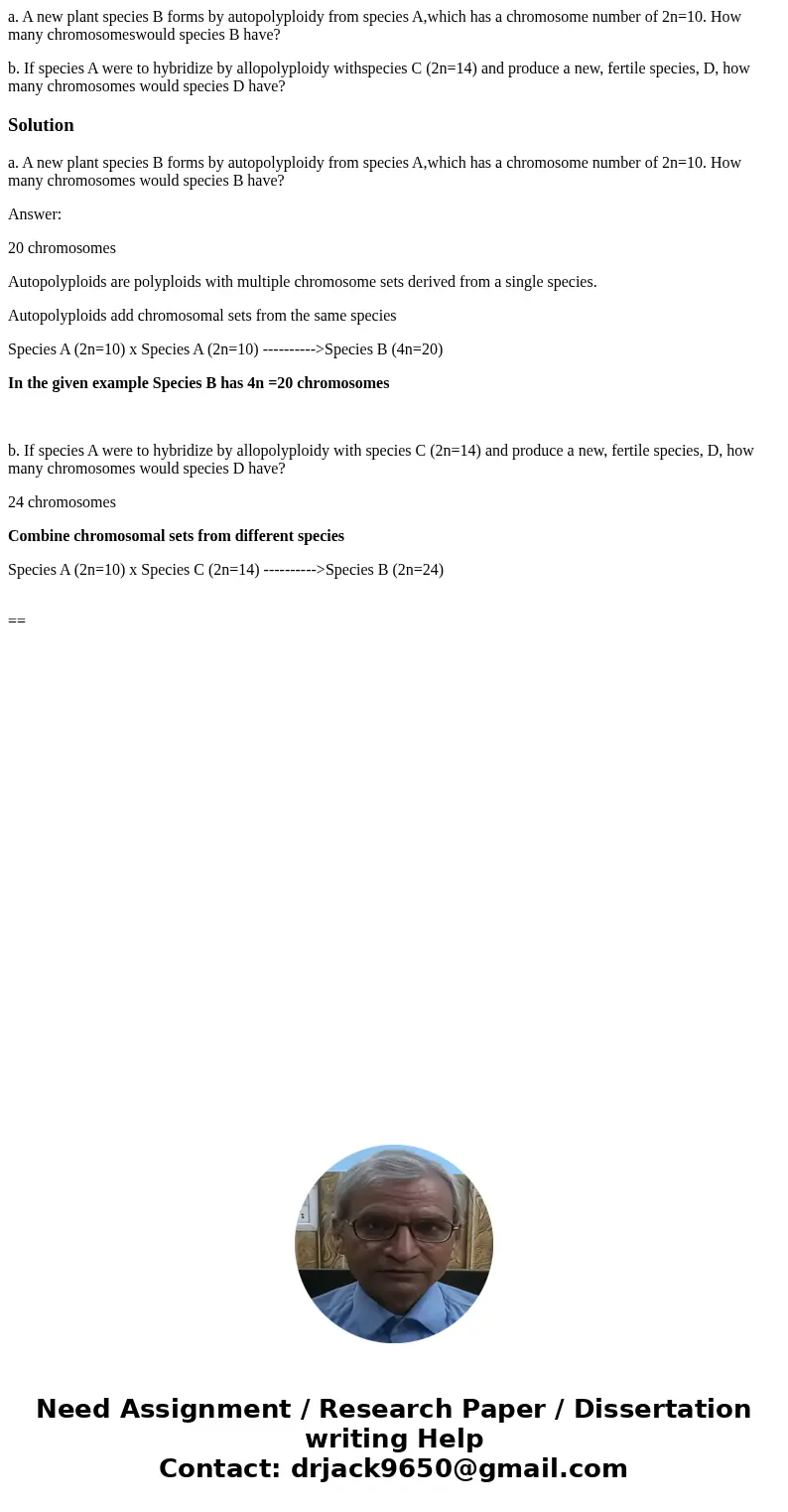a A new plant species B forms by autopolyploidy from species
a. A new plant species B forms by autopolyploidy from species A,which has a chromosome number of 2n=10. How many chromosomeswould species B have?
b. If species A were to hybridize by allopolyploidy withspecies C (2n=14) and produce a new, fertile species, D, how many chromosomes would species D have?
Solution
a. A new plant species B forms by autopolyploidy from species A,which has a chromosome number of 2n=10. How many chromosomes would species B have?
Answer:
20 chromosomes
Autopolyploids are polyploids with multiple chromosome sets derived from a single species.
Autopolyploids add chromosomal sets from the same species
Species A (2n=10) x Species A (2n=10) ---------->Species B (4n=20)
In the given example Species B has 4n =20 chromosomes
b. If species A were to hybridize by allopolyploidy with species C (2n=14) and produce a new, fertile species, D, how many chromosomes would species D have?
24 chromosomes
Combine chromosomal sets from different species
Species A (2n=10) x Species C (2n=14) ---------->Species B (2n=24)
==

 Homework Sourse
Homework Sourse